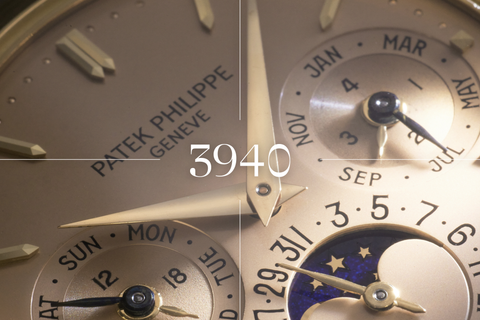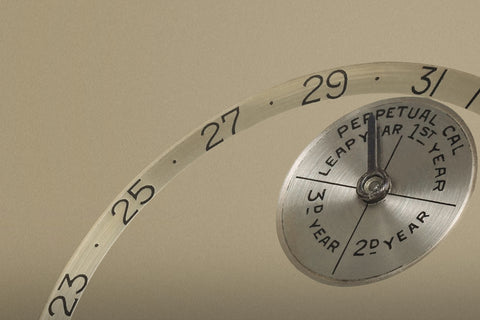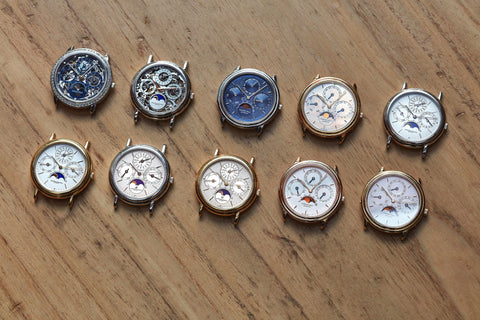Classic and restrained, this Patek Philippe perpetual calendar ref. 5039 is a descendant of the familiar 3940, though more rarely seen in white gold by comparison. Distinguished by a stylised hobnail pattern that runs around the bezel of the watch, the piece is a rare find for any collector looking for a perpetual calendar with a noteworthy characteristic.
Perpetual Beginnings
The perpetual calendar has long fascinated watchmakers. Since the very first one left the workbench of Thomas Mudge in 1762, it has been viewed as one of the great technical hurdles of horology. Indeed, the ability to construct this complication is a skill few have mastered. Famously, Abraham-Louis Breguet made a handful of them, although the cost of producing these was so high that only a select few of his clients could justify purchasing one. This was due to the complexity, time and skill involved in assembling the complication, even for such an accomplished watchmaker.




Within a perpetual calendar, certain parts don't budge for hundreds of days, and then must accurately and precisely move into place when they're needed. This level of precision is what makes the complication so challenging. Patek Philippe were the first to put it inside a wristwatch in 1925, and then again to serially produce it in 1941, with the reference 1526. This decade-and-a-half gap between the two models goes to show just how challenging the process must have been. Patek Philippe were also the first to create an automatically winding perpetual calendar movement, with the reference 3448.
A few years later, the advent of the Quartz Crisis threatened the very existence of mechanical timepieces, including perpetual calendars, which became increasingly irrelevant in the face of cheap, reliable, battery-powered movements. This seismic event decimated the watchmaking industry, with the number of watchmakers in Switzerland dropping from 1,600 to 600. As a result, very few truly complicated pieces were made over the next decade or so. Most manufactures had either embraced the idea that quartz movements represented the future or were too financially weakened to invest in creating costly pieces without the guarantee that anyone would want to purchase them.




However, afew mavericks saw things differently. Whereas many tried to move towardsinnovation and progress, a handful of individuals saw the value of doublingdown on tradition, as one of the only ways to ensure that watchmaking couldsurvive. Against all odds, the perpetual calendar experienced a revival.






























































































































































































































